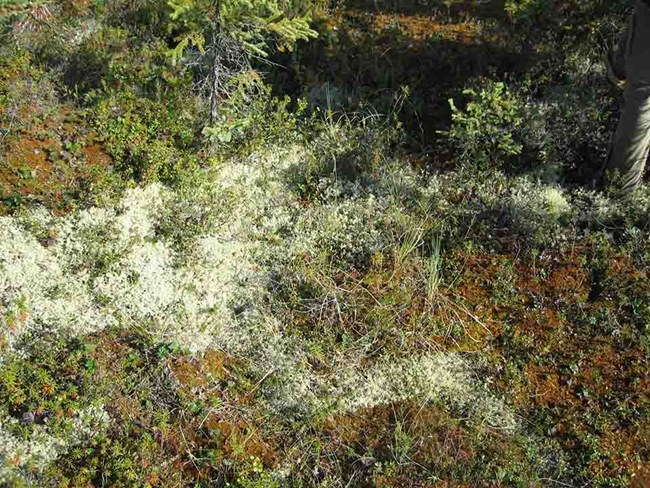Last updated: December 30, 2019
Article
Species Variation along a Landscape Gradient

This new study examines how the species that make up plant communities change across the landscape (called species turnover). We wanted to know: Are relative rates of species turnover in relation to habitat similar or different among mosses, lichens, and vascular plants? These different kinds of plants (functional groups) have very different methods of dispersing and colonizing new areas, so we wanted to know how they compared. Our results suggest that differences in these functional group dispersal abilities, in combination with varying abilities to use fine‐scale temporal and spatial habitat variation, result in reduced species turnover among mosses and macrolichens as compared to vascular plants. This was true along landscape gradients and across distance in interior Alaska.
Concordant community similarity patterns across functional groups in subarctic plant assemblages
Abstract
In light of increasing threats to global biodiversity, identifying the patterns in and drivers of variation in species composition along the environmental gradients in understudied regions is crucial for understanding ecosystem vulnerability and resilience. Terrestrial plant communities of interior Alaska are dominated by three major groups of primary producers—vascular plants, mosses, and macrolichens. Recent work has demonstrated broad‐scale positive correlations in species richness patterns among these three functional groups across scales in this region. However, the conspicuous and fundamental differences in reproductive strategies, dispersal ability, and physiological adaptations among these functional groups prompted us to investigate how community composition and species turnover vary across environmental gradients among these disparate groups. We hypothesized that species turnover would be greater in vascular plants than for spore‐producing cryptogam functional groups across gradients of elevation, vegetation type, and distance due to underlying differences in dispersal abilities and the temporal and spatial resolution of habitat preferences among these disparate groups. To address these issues, we compiled a uniquely comprehensive species composition dataset in interior Alaska utilizing a multi‐stage systematic design. We analyzed community similarity using Morisita‐Horn index of multi‐community similarity among all pairs of vegetation types and elevation bands for each functional group and used regression analysis to quantify the rate at which compositional similarity decayed with geographical distance among groups. Our study reveals consistently higher compositional variation (lower similarity) among vascular plants as compared to mosses and macrolichens across landscape gradients and spatial scales in interior Alaska. We also found that the decay of similarity with distance was less for both of the cryptogam groups than for vascular plants. Taken together, our results suggest that differences in functional group dispersal abilities, in combination with varying abilities to utilize fine‐scale temporal and spatial habitat variation, result in reduced turnover among mosses and macrolichens as compared to vascular plants both along landscape gradients and across distance in interior Alaska.
Stehn, S. E. and C. A. Roland. 2018. Concordant community similarity patterns across functional groups in subarctic plant assemblages. Ecosphere 9(4):e02181.
